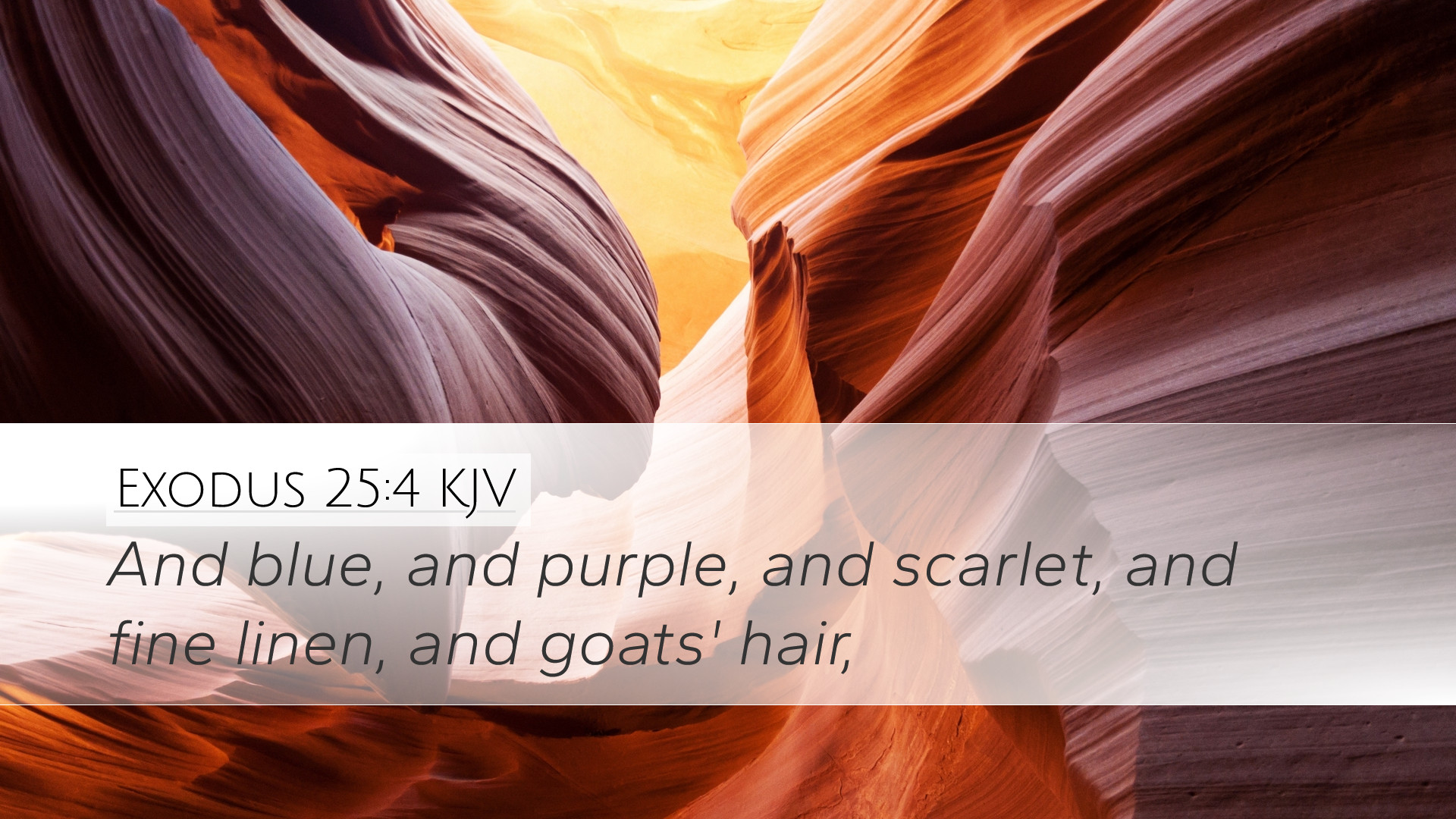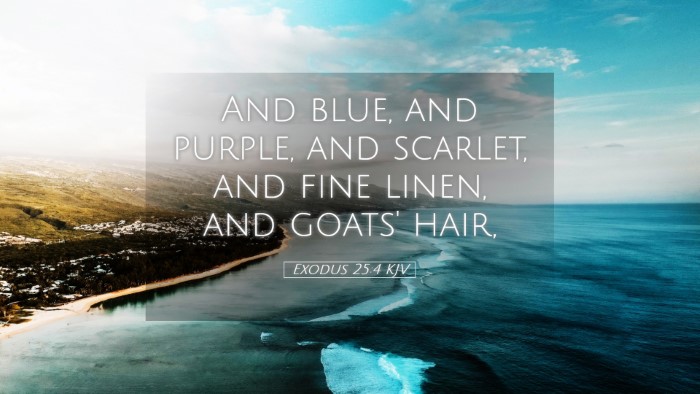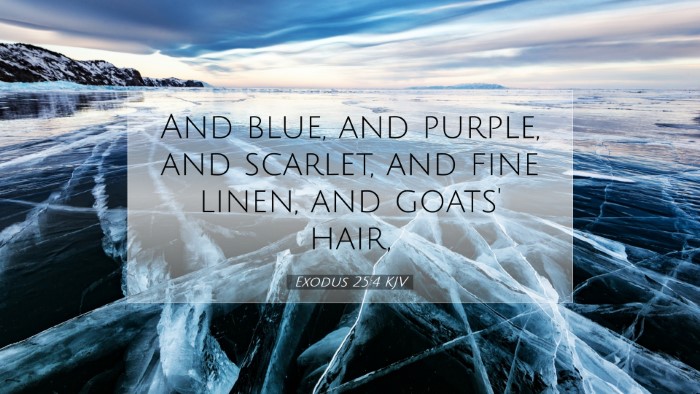Exodus 25:4 - Commentary and Insights
Verse Context: Exodus 25:4 states, "And blue, and purple, and scarlet, and fine linen, and goats' hair." This verse forms part of the instructions God gives to Moses regarding the construction of the Tabernacle and its furnishings.
Significance of Materials
Matthew Henry's Insight: Henry highlights the significance of each material mentioned. The blue represents the heavens and divine revelation, while purple indicates royalty and priestly dignity. Scarlet symbolizes sacrifice and atonement, and fine linen denotes purity and the righteousness of saints. Each of these materials contributes to the overall purpose of the Tabernacle as a place where God dwells among His people.
Albert Barnes' Commentary: Barnes elaborates that the choice of materials reflects God's majesty and the reverence needed in worship. The materials were not ordinary; they were costly and splendid, fitting for the House of God. This also speaks to the principle of offering our best to God, both in worship and service.
Adam Clarke’s Perspective: Clarke emphasizes the plight of the Israelites in the wilderness. Despite their circumstances, God commanded them to use the finest materials, thus indicating that true worship and a relationship with God transcends one’s present situation. God desires excellence, which reflects His nature and character.
Theological Implications
The construction of the Tabernacle serves as a model for worship and approach to God. The specific materials illustrate various aspects of God's nature and the way He desires to be worshiped. Here are some theological implications drawn from Exodus 25:4:
- The Holiness of God: The meticulous instructions in the selection of materials indicate God's holiness. Worship must reflect His nature; therefore, our offerings and the way we approach Him must exhibit reverence.
- Preparation for Worship: The rich colors and fine fabrics emphasize devotion in preparing for worship. God's desire to dwell among His people necessitates a response of dedication and readiness to meet Him.
- Symbolism of Colors: The colors can also be viewed symbolically. Blue resembles loyalty and faithfulness, purple signifies majesty, scarlet relates to the blood sacrifice, and linen represents righteousness—each contributing to a fuller understanding of God's redemptive plan.
Application for Worship Leaders
For pastors and worship leaders, the implications of Exodus 25:4 provide essential lessons:
- Excellence in Worship: Just as the Israelites were instructed to use the finest materials, worship leaders today should strive for excellence in all aspects of worship—music, decor, and teachings—making their efforts pleasing to God.
- Engaging Visuals in Worship: The visual elements in worship, inspired by the materials God chose, should evoke a sense of awe and reverence, encouraging congregants to focus their hearts on deepening their relationship with God.
- Teaching about Offerings: This passage serves as a reminder to instruct congregants about the importance of bringing their best offerings—time, talent, and treasure—before the Lord in every act of service and worship.
Conclusion
In reflecting upon Exodus 25:4, it becomes evident that even in the details of material selection for the Tabernacle, God demonstrates His intention for His people to worship Him with purity, excellence, and reverence. The materials serve as symbols pointing to the greater truth of God's character: His holiness, majesty, and the sacrificial love embodied in Christ. For students, theologians, and pastors, this verse is both a historical reference and a call to maintain the highest standards in worship—an eternal reminder that our approach to God ought to reflect His glorious nature.


